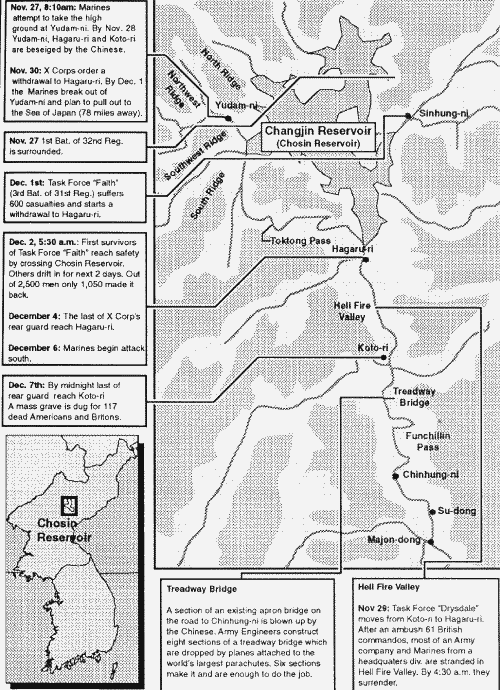The core of this account is taken verbatim from the Army report Chosin Reservoir. It is largely supplemented by extracts from a more definitive analysis, "East Of Chosin", Roy E. Appleman, 1987, and Chinese photographs and accounts in their Korean War Museum at Beijing. B.L.Kortegaard
If you know the enemy and know yourself, you need not fear the result of ahundred battles.
SUN TZU (500 B.C.)
Be ready for what the enemy is capable of doing, not what you think he will do.
Basic military maxim.
* It was bitter cold. The temperature was below zero. The wind howled. Snowfell-a snow so dry that dust from the road mixed with it in yellowish cloudsthat swirled about the column of trucks. Tundra-like, bleak, and withoutvegetation in most places, the land was depressing.
Huddled together in the back of the trucks, the men of the 1st Battalion,32d Infantry, stomped their feet on the truck beds in futile attempts to keeptheir limbs from becoming stiff and numb. Most of them wore long woolenunderwear, two pairs of socks, a woolen shirt, cotton field trousers over a pairof woolen trousers, shoepacs, pile jacket, wind-resistant reversible parka withhood, and trigger-finger mittens of wool insert and outer shell. To keep theirears from freezing they tied wool scarves around their heads underneath theirhelmets. Still the cold seeped through. Occasionally the entire column ground toa halt to permit the men to dismount and exercise for a few minutes. [1]
Lt.Col. Don C. Faith commanded the 1st Battalion, 32d Infantry. As part ofthe 7th Infantry Division and of X Corps (Maj.Gen. Edward M. Almond), thebattalion was moving from Hamhung north to relieve marines on the east shore ofChosin Reservoir and then to continue the attack to the Yalu River. A man couldtake even stinging, stiffening cold if it meant the end of a war. And that washow things looked on this 25th day of November 1950. In fact, just beforeFaith's battalion left Hamhung some of the men had listened to a news broadcastfrom Tokyo describing the beginning of a United Nations offensive in Koreadesigned to terminate the war quickly. Originating in General of the ArmyDouglas MacArthur's headquarters, the report predicted that U.S. divisions wouldbe back in Japan by Christmas. It had been cheering news. [2]
Having assembled three divisions at the east coast port of Hungnam at theend of October, General Almond had launched his X Corps on an offensive with theobjective of reaching the Manchurian border as soon as possible. [3] By thethird week of November the corps was scattered across an area of more than fourthousand square miles of bare, bleak, and rugged mountains. The 1st MarineDivision, attacking along both sides of Chosin Reservoir, was more than fiftymiles inland. One regiment of the 7th Division-the 17th Infantry-had gone morethan a hundred miles north of Hungnam and had reached the Yalu River on 21November. [4] Other units of that division were separated by straightlinedistances of seventy or eighty miles. Road distances, tortuously slow, were muchlonger. North Koreans had offered only slight resistance against X Corpsadvances, but the obstacles of terrain and weather were tremendous.
Passing engineer crews working on the twisted, shelf-like road notched intothe side of precipitous slopes, the truck column bearing Colonel Faith and hismen northward at last reached Hagaru-ri at the south end of Chosin Reservoir.Several Marine Corps units were located in Hagaru-ri. The truck column passed afew tents and small groups of marines huddled around bonfires. [5] When the roadforked, Colonel Faith's column followed the right-hand road, which led past thefew desolate houses in Hagaru-ri toward the east side of the reservoir.
At least one or two men from each company were frostbite casualties latethat afternoon when the battalion closed into defensive positions a mile or sonorth of Hagaru-ri. The night was quiet. There were warm-up tents behind thecrests of the hills and the men spent alternate periods manning defensepositions and getting warm.
The morning of 26 November was clear and cold. Since the marines stilloccupied the area, Colonel Faith waited for more complete orders, which had beenpromised. Toward noon, the assistant commander of the 7th Division (Brig.Gen.Henry I. Hodes) arrived at Faith's command post with more information on theplanned operation. Having flown to Hagaru-ri by light aircraft, he had drivennorth by jeep. Additional 7th Division units, he explained to Colonel Faith,were then en route to Chosin Reservoir. The commander of the 31st InfantryRegiment (Col. Allan D. MacLean) was to arrive soon to take command of all unitson the east side of the reservoir. He was bringing with him his own 3dBattalion, his Heavy Mortar Company, his Intelligence and ReconnaissancePlatoon, a detachment of medical personnel, and the 57th Field ArtilleryBattalion.
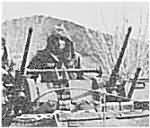 | The 57th Field Artillery Battalion would be short one firing battery butwould have Battery D, 15th AAA Automatic Weapons Battalion-a unitequipped with halftracks mounting quadruple caliber .50 machine gunsand dual 40-mm guns. [6] | 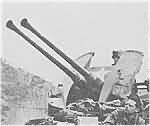 |
General Hodes said theMarine regiment would move on the following day to join the rest of the 1stMarine Division in an attack aimed at securing another important road northwestfrom Hagaru-ri. The mission of MacLean's task force, and thus of Colonel Faith'sbattalion, was to secure the important road running along the east side of thereservoir and thence north to the Manchurian border. [7]
When Colonel MacLean arrived with his staff later that evening, he statedhis intentions of attacking north as soon as his task force arrived. He approvedColonel Faith's plan to take over the northernmost defensive position as soon asthe marines vacated it the next morning. [8]
Monday, 27 November, was another clear, cold day. Marine trucks were on theroad soon after dawn shuttling troops south. By noon, when the road was clearagain, Colonel Faith moved his battalion north. The rest of Colonel MacLean'sforce arrived that afternoon, moving into position about three or four milessouth of Faith's battalion.

As night fell on 27 November, the first order of business was defense,although a continuation of the northward drive the marines had begun was plannedfor the next day. Lending greater force to common knowledge that Chinese forcesin undetermined strength were roaming the mountains in the vicinity of ChosinReservoir, the marines had told Colonel Faith that on the day before severalChinese prisoners had revealed the presence of three fresh divisions operatingin the area of the reservoir. Their mission, the prisoners had said, was tosever the American supply route. [9] The marines also told Faith's men that onthe previous night, in this same location, a Chinese patrol had pulled a marinefrom his foxhole, disarmed him, and beaten him.
With this in mind, Colonel Faith placed his companies in a perimeter thatlay across the road facing north, with the right flank bent south to facemountains that loomed high to the east. During the late afternoon the companiesdug in their positions and cut fields of fire through some scrub brush on thehills. After breaking through eight or ten inches of frozen earth, the diggingwas easy. There were no stones in the ground. Colonel Faith set up his commandpost in a few farm houses in a small valley less than a thousand yards behindthe front lines. It got dark early, still bitterly cold. For an hour or twoafter dark there was the sound of shell bursts around the perimeter sinceforward observers had not completed the registration of artillery and mortardefensive fires before dark. For another hour or two, until after 2100, it wasquiet.
The battalion adjutant, having driven a hundred and fifty miles that dayfrom division headquarters, arrived with two weeks' mail. A few minutes later anofficer from Colonel MacLean's headquarters brought the operation order for theattack scheduled for dawn the next morning. Colonel Faith called his companycommanders, asking them to bring their mail orderlies and to report to his command post for the attack order.
The enemy attacked while the meeting was in progress. Probing patrols camefirst, the first one appearing in front of a platoon near the road. When thefriendly platoon opened fire Company A's executive officer (Lt. Cecil G. Smith),suspecting that the enemy force was a reconnaissance patrol sent to locatespecific American positions, tried to stop the fire. He ran up and down the lineshouting: "Don't fire! Don't fire!" But by the time he succeeded, theenemy force had evidently discovered what it needed to know and had melted awayinto the darkness. In the meantime, enemy patrols began to repeat this patternat other points along the defensive perimeter. A few minutes after midnight thepatrolling gave way to determined attack. While one Chinese company struck southalong the road, another plunged out of the darkness from the east to strike theboundary between the two rifle companies that were east of the road.

The defensive perimeter began to blaze with fire. In addition to directingsteady mortar and small-arms fire against Colonel Faith's battalion, the Chinesekept maneuvering small groups around the perimeter to break the line. As oneenemy group climbed a steep ridge toward a heavy machine gun operated by Cpl.Robert Lee Armentrout, the corporal discovered he could not depress his gunenough to hit the enemy. He then picked up his weapon, tripod and all, cradledit in his arms, and beat off the attack.
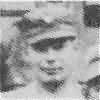
As the night wore on not every position along the perimeter held as well.Within two or three hours after they first attacked, the Chinese had seized andorganized the highest point on the two ridgelines that had belonged to the twocompanies on the east side of the road. Loss of this ground seriously weakenedthe defense of both companies, and also permitted the enemy to fire into anative house where Capt. Dale L. Seever had set up his command post. Forced tovacate, he moved his Weapons Platoon and command group to the front line to helpdefend what ground he had left. On the extreme right flank the Chinese forcedtwo platoons out of position. On the left side of the road they circled widearound the left flank and seized a mortar position.
Wire communications with Colonel MacLean's headquarters and with the 57thField Artillery Battalion went out soon after the attack started. Afterestablishing radio communication, which was never satisfactory, Colonel Faithlearned that the Chinese were also attacking the other units of MacLean's taskforce. This explained why the artillery, involved with the more immediatenecessity of defending its own position, was unable to furnish sustained supportto Faith's battalion. [10]
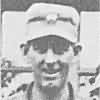
Colonel Faith's battalion was still in place when daylight came on 28November, but there were serious gaps in the line. Although ordered to launchhis attack at dawn, when the time came to carry out the order Colonel Faith hadhis hands full trying to hang onto his perimeter and recover the ground lostduring the night. The night attack had been costly in casualties and morale.When it moved to Chosin Reservoir, Faith's battalion had about ninety per centof its authorized strength plus 30 to 50 ROK soldiers attached to each company.Morale had been good. [11] Although casualties during the night had not beenalarmingly high, a disproportionately high number of officers and noncoms hadbeen put out of action. In Company A, for instance, when Lt. Raymond C.Denchfield was wounded in the knee, his company commander (Capt. Edward B.Scullion) set out to temporarily take charge of Denchfield's platoon. An enemygrenade killed Scullion. Colonel Faith then sent his assistant S-3 (Capt. RobertF. Haynes) to take command of Company A. He was killed by infiltrators before hereached the front lines. Colonel Faith telephoned the executive officer(Lieutenant Smith) and told him to take command of the company.
"It's your baby now," Faith told him.
The strength and determination of the enemy attack was also a blow tomorale. It now appeared to Faith's men that, in addition to the severe weather,their troubles were to be compounded by fresh enemy troops. The cold weather wasbad enough, especially as there were no warm-up tents within the perimeter.During the night, when they had not been engaged in beating off enemy attacks,the men could do nothing for relief but pull their sleeping bags up to theirwaists and sit quietly in their holes watching for another attack, or formorning. The light machine guns did not work well in the cold. This wasespecially true during the night when the temperature dropped sharply. The gunswould not fire automatically and had to be jacked back by hand to fire singlerounds. The heavy machine guns, however, with antifreeze solution in the waterjackets, worked all right.
Similar attacks had fallen against the perimeter enclosing Colonel MacLean'sforce four miles to the south of Faith's battalion. Chinese had overrun twoinfantry companies during the early morning and got back to the artillerypositions before members of two artillery batteries and of the overrun companiesstopped them. After confused and intense fighting during the hours of darkness,the enemy withdrew at first light. Both sides suffered heavily. [12]
Colonel MacLean had another cause for concern. Soon after arriving in thatarea the night before, he had dispatched his regimental Intelligence andReconnaissance Platoon to patrol the surrounding area. Twelve hours after theplatoon had set out, no member had returned. [13]
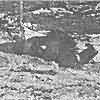 Colonel Faith tried all day to recover the ground lost during the night. Themost critical loss was the prominent knob at the boundary of the two companieseast of the road. Lt. Richard H. Moore led his platoon in counterattacks on 28November and succeeded in recovering all but the important knob itself.Repeatedly, Moore got his platoon to the bottom of the knob only to have theChinese, many of whom were firing American-made weapons, drive it back again. Thefriendly counterattacks were greatly aided by mortar fire and by very close andeffective air support by carrier-based Corsairs.
Colonel Faith tried all day to recover the ground lost during the night. Themost critical loss was the prominent knob at the boundary of the two companieseast of the road. Lt. Richard H. Moore led his platoon in counterattacks on 28November and succeeded in recovering all but the important knob itself.Repeatedly, Moore got his platoon to the bottom of the knob only to have theChinese, many of whom were firing American-made weapons, drive it back again. Thefriendly counterattacks were greatly aided by mortar fire and by very close andeffective air support by carrier-based Corsairs.
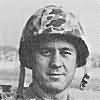
There were planes in the airmost of the day. Front-line observers communicated with the planes by theregular assault-wire lines to battalion headquarters, where a Marine tacticalair control officer (Capt. Edward P. Stamford) relayed the instructions to thepilots. The planes made some passes so close to friendly troops that severaltargets were marked with white phosphorus grenades thrown by hand. Morefrequently the infantrymen used rifle grenades to mark their targets. [14] Inspite of these efforts, the Chinese managed to hold the important knob.
Late in the afternoon both Lieutenant Moore and the battalion sergeant majorwere put out of action by the same burst from an American caliber .45 Thompsonsubmachine gun. One bullet killed the sergeant. Another one struck Mooresquarely on the forehead, raised a bump and dazed him for a short time, but didnot otherwise hurt him. Unable to recover the main terrain feature within itsperimeter, Company C organized a reverseslope defense directly in front of theknob.
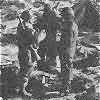 Sixty or more casualties gathered at the battalion aid station during theday. By evening about twenty bodies had accumulated in front of the two-roomfarm house in which the aid station was operating. Inside, the building wascrowded with wounded; a dozen more wounded, some wearing bandages, stood in ahuddle outside.
Sixty or more casualties gathered at the battalion aid station during theday. By evening about twenty bodies had accumulated in front of the two-roomfarm house in which the aid station was operating. Inside, the building wascrowded with wounded; a dozen more wounded, some wearing bandages, stood in ahuddle outside.
During the afternoon of 28 November a helicopter landed in a rice paddy nearthe battalion's command post buildings. General Almond (X Corps commander), onone of his frequent inspections of his front lines, stepped out of the craft. Hediscussed the situation with Colonel Faith. Before leaving, General Almondexplained that he had three Silver Star medals in his pocket, one of which wasfor Colonel Faith. He asked the colonel to select two men to receive the others,and a small group to witness the presentation. Colonel Faith looked around.Behind him, Lt. Everett F. Smalley, Jr., a platoon leader who had been woundedthe night before and was awaiting evacuation, sat on a water can.
"Smalley," said Colonel Faith, "come over here and stand atattention.?
Smalley did so. Just then the mess sergeant from Headquarters Company (Sgt.George A. Stanley) walked past.
"Stanley," the colonel called, "come here andstand at attention next to Lieutenant Smalley."
Stanley obeyed. Colonel Faith then gathered a dozen or more men-walkingwounded, drivers, and clerks-and lined them up behind Smalley and Stanley.
After pinning the medals to their parkas and shaking hands with the threemen, General Almond spoke briefly to the assembled group, saying, in effect: "Theenemy who is delaying you for the moment is nothing more than remnants ofChinese divisions fleeing north. We're still attacking and we're going all theway to the Yalu. Don't let a bunch of Chinese laundrymen stop you." [15]

Unfolding his map, General Almond walked over and spread it on the hood of anearby jeep and talked briefly with Colonel Faith, gestured toward the north,and then departed. As the helicopter rose from the ground, Colonel Faith rippedthe medal from his parka with his gloved hand and threw it down in the snow. Hisoperations officer (Major Wesley J. Curtis) walked back to his command post withhim.
"What did the General say?" Curtis asked, referring to theconversation at the jeep.
"You heard him," muttered Faith; "remnants fleeing north!"[16]
Lieutenant Smalley went back to his water can. "I got me a Silver Star,"he remarked to one of the men who had observed the presentation, "but Idon't know what the hell for!"
That afternoon Colonel MacLean came forward to Colonel Faith's battalion.Toward evening, however, when he attempted to leave, he was stopped by a Chineseroadblock between the two battalions, thus confronting him with the grimrealization that the enemy had surrounded his position. He remained at theforward position.
Just before dark, between 1700 and 1730, 28 November, planes struck whatappeared to be a battalion-sized enemy group that was marching toward thebattalion perimeter from the north, still two or three miles away. The tacticalsituation, even during the daytime, had been so serious that many of the unitsdid not take time to carry rations to the front line. When food did reach thesoldiers after dark, it was frozen and the men had no way to thaw it except byholding it against their bodies. By this time most of the men realized the enemywas mounting more than light skirmishes, as they had believed the previousevening.
"You'd better get your positions in good tonight," one platoonleader told his men that evening, "or there won't be any positionstomorrow." [17]
As darkness fell on 28 November, Colonel Faith's battalion braced itself foranother attack. The most critical point was the enemy-held knob between the twocompanies east of the road. Lt. James G. Campbell (a platoon leader of CompanyD) had two machine guns aimed at the knob, and between his guns and the Chineseposition there was a five-man rifle squad. Lieutenant Campbell was particularlyconcerned about this squad. He was afraid it was not strong enough to hold theposition.
Enemy harassing fire, fairly constant all day, continued to fall within thebattalion perimeter after dark. It had been dark for three or four hours,however, before the enemy struck again, hitting several points along theperimeter. As expected, one enemy group attacked the vulnerable area east of theroad. Lieutenant Campbell heard someone shout and soon afterward saw severalfigures running from the knoll held by the five-man squad. In the darkness hecounted five men and shot the sixth, who by then was only ten feet from hisfoxhole. Expecting more Chinese from the same direction, he shouted instructionsfor one of his machine-gun crews to displace to another position from which itcould fire upon the knoll that the five men had just vacated. At that momentLieutenant Campbell was knocked down. He thought someone had hit him in the facewith a hammer, although he felt no pain. A mortar fragment about the size of abullet had penetrated his cheek and lodged in the roof of his mouth. He remainedwith his gun crews. After the first Chinese had been driven back, enemy activitysubsided for about an hour or two.
While this fighting was taking place, General Almond was flying to Tokyo atGeneral MacArthur's order. The corps commander reported to General MacArthur at2200, 28 November, and received orders to discontinue X Corps' attack and towithdraw and consolidate his forces for more cohesive action against the enemy.[18]
Five hours after this meeting, at about 0300, 29 November, Colonel Faith'sexecutive officer (Major Crosby P. Miller) went to the frontline companies withorders from Colonel MacLean to prepare at once to join the rest of his forcefour miles to the south. Because of the enemy roadblock separating the twoelements of his task force, Colonel MacLean ordered Faith to abandon as muchequipment as necessary in order to have enough space on the trucks to haul outthe wounded, and then to attack south. [19] All wounded men-about a hundred bynow-were placed on trucks that formed in column on the road. Because of thenecessity of maintaining blackout, it was not practical to burn the vehicles,kitchens, and other equipment to be left behind.
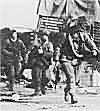
When the withdrawal order reached the rifle platoons, the plan forwithdrawing the battalion segment by segment collapsed as the men abruptly brokecontact with the Communists, fell back to the road, and assembled for the march.Enemy fire picked up immediately since the movement and the abrupt end of thefiring made it obvious to the Chinese that the Americans were leaving.
Colonel Faith directed two companies to provide flank security by precedingthe column along the high ground that paralleled the road on both sides forabout two miles. Movement of the 1st Battalion column got under way about anhour before dawn, 29 November. Because Captain Seever (CO, Company C) had beenwounded in the leg the day before, he instructed one of his platoon leaders (Lt.James 0. Mortrude to lead the company. Slipping and stumbling on thesnow-covered hills, Mortrude and the rest of the company set out along the highground east of the road. Company B was on the opposite side. Mortrude could hearthe vehicles below, but could see nothing in the dark. He encountered no enemy.The column moved without opposition until, at the first sign of daylight, itreached the point where the road, following the shoreline, turned northeast tocircle a long finger of ice. The Chinese roadblock was at the end of this narrowstrip, and here enemy fire halted the column. The battalion's objective, theperimeter of the rest of MacLean's task force, was now just across the strip ofice and not much farther than a mile by the longer road distance.
Halting the vehicular column, Colonel Faith sent two companies onto a highhill directly north of the strip of ice with orders to circle the roadblock and attack it from the east. At the same time, he told LieutenantCampbell to set up his weapons on a hill overlooking the enemy roadblock.Carrying two heavy machine guns and a 75-mm recoilless rifle, Campbell's groupclimbed the hill and commenced firing at the general roadblock area. From thishill he and his men could see the friendly perimeter on the opposite side of thenarrow strip of ice, and to the south beyond that they could see enemy soldiers.A hundred or more Chinese were standing on a ridgeline just south of thefriendly force. About a dozen Chinese, in formation, marched south on the road.They were beyond machine-gun range, but the recoilless rifle appeared to beeffective on the ridgeline.
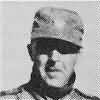
Down on the road, Colonel Faith's column suddenly received fire from thevicinity of the friendly units across the finger of ice. Believing that the firewas coming from his own troops, Colonel MacLean started across the ice to makecontact with them and halt the fire. He was hit four times by enemy fire-the menwatching could see his body jerk with each impact-but he continued and reachedthe opposite side. There he disappeared and was not seen again.
It now became evident that the fire was Chinese. Colonel Faith assembled asmany men as he could and led them in a skirmish line directly across the ice. Asit happened, a company-sized enemy force was preparing to attack positions ofthe 57th Field Artillery Battalion when Faith's attack struck this force in therear. Disorganized, the Chinese attack fell apart. Faith's men killed aboutsixty Chinese and dispersed the rest. In the meantime, the two rifle companiesapproached the enemy force manning the roadblock. Now surrounded itself, theroadblock force also fell apart and disappeared into the hills. With the roadopen, the column of vehicles entered the perimeter of the other friendly forces.[20]
After a search for Colonel MacLean failed to discover any trace of him,Colonel Faith assumed command and organized all remaining personnel into a taskforce. Friendly forces, although consolidated, still occupied a precariousposition. During the afternoon Faith and his commanders formed a perimeterdefense of an area about 600 by 2,000 yards into which the enemy had squeezedthem. This perimeter, around a pocket of low, slightly sloping ground, wasparticularly vulnerable to attack. Except for the area along the reservoir,Colonel Faith's task force was surrounded by ridgelines, all of which belongedto the Chinese. There were firing positions on a couple of mounds of earthwithin the perimeter and along the embankments of the road and single-trackrailroad that ran through the area. Several Korean houses, all damaged, stoodwithin the perimeter. There were many Chinese bodies on the ground, one of whichwore a new American field jacket that still had its original inspection tags.[21] Rations were almost gone. Ammunition and gasoline supplies were low. Themen were numbed by the cold. Even those few who had managed to retain theirbedrolls did not dare fall asleep for fear of freezing. The men had to movetheir legs and change position occasionally to keep their blood circulating.Automatic weapons had to be tried every fifteen to thirty minutes to keep themin working order.
Three factors prevented the situation from being hopeless. First, airdropswere delivered on the afternoon of 29 October. The first drop landed on highground to the cast, and friendly forces had to fight to get it. They recoveredmost of the bundles, and captured several Chinese who had also been after thesupplies. A second drop went entirely to the Chinese, landing outside theperimeter to the southwest. A third drop was successful. One airload consistedof rations, the other of ammunition. The second factor was the Marine tacticalair support, which constantly harassed the enemy with napalm, rockets, andmachine-gun fire. Throughout 29 and 30 November the black Corsairs hit theenemyeven during the night between the two days, when they operated by brightmoonlight. Pilots later reported that so many enemy personnel were in the area,they could effectively drop their loads anywhere around the perimeter.
The third factor was the hope that friendly forces would break through theChinese from the south and effect a rescue. There was talk that the assistantcommander of the 7th Division (General Hodes) had even then formed a task forceand was attempting to join them. This was true.
Colonel MacLean had asked for help the day before (28 November) when herealized he was surrounded. In a message to X Corps he had asked that his 2dBattalion, then at Hamhung awaiting orders from corps, be dispatched to him atonce, even if it had to fight its way north. [22]
Although corps failed to act promptly upon MacLean's request, it did form atask force from several small units then located at Hudong-ni, a small lumbertown about a third of the distance north between Hagaru-ri and Colonel MacLean'sforce. Under command of General Hodes, this task force started north atmid-morning, 28 November, but a strong enemy force halted it just north of thevillage, and forced it to withdraw. [23]
The 2d Battalion, 31st Infantry, meanwhile waited for orders. Late on theafternoon of the 28th, corps ordered it to set up a blocking position atMajon-dong, a third of the distance from Hamhung to Hagaruri. It was to move byrail, with its trucks following by road. A little later corps changed theorders. The 2d Battalion was to move by rail to Majon-dong, the next morning.From there X Corps would furnish trucks to haul the battalion north to helpColonel MacLean. The battalion arrived at Majon-dong and spent the entire daywaiting for X Corps trucks. None came. When the battalion's own trucks arrived,as part of the initial plan for establishing a roadblock in the village, X Corpsordered them off the road. Because of confusion at X Corps headquarters, thebattalion's own trucks were not released to it, even though the promised X Corpstrucks did not arrive. [24] Thus, two entire days passed without progress inproviding relief for Colonel MacLean's surrounded battalions. It was while his2d Battalion waited at Majon-dong that Colonel MacLean disappeared at the enemyroadblock.
Finally, on the morning of 30 November, the relief battalion got under way.Before it had gone halfway to Hagaru-ri, it came under enemy attack itself, anddid not reach Koto-ri until the following morning. By then, the road betweenHagaru-ri and Hamhung was threatened by the enemy and it became necessary todivert the 2d Battalion to help protect the entire corps withdrawal route, andit was therefore held in Koto-ri. [25]
Ten miles above Hagaru-ri, Colonel Faith's task force beat off enemy probingattacks that harassed his force during the night of 29-30 November. The Chineseconcentrated on the two points where the road entered the perimeter, and on thesouth they succeeded in overrunning a 75-mm recoilless rifle position andcapturing some of the crew. There were no determined attacks, however, and theperimeter was still intact when dawn came. It was another cold morning. The skywas clear enough to permit air support. Inside the perimeter, soldiers builtfires to warm themselves and the fires drew no enemy fire. Hopefully, the mendecided they had withstood the worst part of the enemy attack. Surely, theythought, a relief column would reach the area that day.
A litter-bearing helicopter made two trips to the area on 30 November,carrying out four seriously wounded men. Fighter planes made a strike on highground around Task Force Faith, and cargo planes dropped more supplies, some ofwhich again fell to the enemy. As the afternoon wore on, it became apparent thatno relief column was coming that day. Colonel Faith and Major Curtis organized agroup of men to serve as a counterattack force to repel any Chinese penetrationthat might occur during the coming night. As darkness settled for anothersixteen-hourlong night, commanders tried to encourage their troops: "Holdout one more night and we've got it made." [26]
On 30 November, again beginning about 2200, the Chinese made another oftheir dishearteningly regular attacks. From the beginning it showed moredetermination than those of the two previous nights, although it did not appearto be well coordinated, nor concentrated in any one area. Capt. Erwin B. Bigger(CO, Company D), in an attempt to confuse the Chinese, hit upon the idea offiring a different-colored flare every time the enemy fired one, and blowing awhistle whenever the enemy blew one. [27]
Soon after midnight, when the enemy attack was most intense, a small groupof Chinese broke into the perimeter at one end. Faith sent his counterattackforce to patch up the line. From then until morning there were five differentpenetrations, and as many counterattacks. One of the penetrations, just beforefirst light on 1 December, resulted in enemy seizure of a small hill within theperimeter, thus endangering the defenses. Battalion headquarters called CompanyD to ask if someone there could get enough men together to counterattack anddislodge the Chinese.
Lt. Robert D. Wilson, a platoon leader, volunteered for the job. "Comeon, all you fighting men!" he called out. "We've got a counterattackto make."
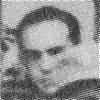
During the night Lieutenant Wilson had directed mortar fire, but theammunition was gone by this time. Assembling a force of 20 or 25 men, he waiteda few minutes until there was enough light. His force was short ofammunition-completely out of rifle grenades and having only smallarms ammunitionand three hand grenades. Lieutenant Wilson carried a recaptured tommy gun. Whendaylight came the men moved out, Lieutenant Wilson out in front, leading. Nearthe objective an enemy bullet struck his arm, knocking him to the ground. He gotup and went on. Another bullet struck him in the arm or chest.
"That one bit," he said, continuing. A second or two later,another bullet struck him in the forehead and killed him.
SFC Fred Sugua took charge and was in turn killed within a few minutes.Eventually, the remaining men succeeded in driving the Chinese out of theperimeter. [28]
Even after daylight, which usually ended the enemy attacks, the Chinese madeone more attempt to knock out a 75-mm recoilless rifle that guarded the road. Inabout two-platoon strength, they came up a deep ditch along the road to thesouth. Lieutenant Campbell rushed Corporal Armentrout forward to plug the gapwith his machine gun. Hit by a mortar round the night before, the water jacketon the machine gun was punctured and, after several minutes, the gun jammed.Armentrout sent his assistant back for the other heavy machine gun, the lastgood one in the section. With it, and by himself, Corporal Armentrout killed atleast twenty enemy soldiers and stopped the attack. [29]
At 0700, 1 December, as Lieutenant Campbell was telling the battalion S4(Capt. Raymond Vaudrevil) that everything was under control, a mortar shelllanded ten feet away and knocked him down. Fragments sprayed his left side, andwounded two other men. Someone pulled Campbell under a nearby truck, then helpedhim to the aid station. The aid-station squad tent was full; about fiftypatients were inside. Another thirty-five wounded were lying outside in thenarrow-gauge railroad cut where the aid station was located.
Dazed with shock, Lieutenant Campbell lay outside about half an hour.Colonel Faith appeared at the aid station, asked all men who could possibly doso to come back on line.
"If we can hold out forty minutes more," the Colonelpleaded, "we'll get air support."
There was not much response. Most of the men were seriously wounded.
"Come on, you lazy bastards," Faith said, "andgive us a hand."
That roused several men, including Campbell. Because he could not walk, hecrawled twenty yards along the railroad track and found a carbine with one roundin it. Dragging the carbine, Campbell continued to crawl to the west. Hecollapsed into a foxhole before he reached the lines, and waited until someonehelped him back to the aid station. This time he got inside for treatment. Themedical personnel had no more bandages. There was no more morphine. Theycleansed his wounds with disinfectant, and he dozed there for several hours.
As it was everywhere else in the perimeter, the situation at the aid stationwas most difficult. Near the medical tent a tarpaulin had been stretched overthe railroad cut to shelter additional patients, and other wounded were crowdedinto two small Korean huts. Company aid men, when they could, assisted themedical officer (Capt. Vincent J. Navarre) and three enlisted men who workedcontinuously at the aid station.
Two thirds of the No. 2 medical chests were lost during the withdrawal fromthe first positions. The jeep hauling them had simply disappeared. Thus, most ofthe surgical equipment was gone. Aid men improvised litters from ponchos andfield jackets. One splint set was on hand, however, and there was plenty ofblood plasma. The aid station had one complete No. 1 chest. When bandages weregone, aid men used personal linens, handkerchiefs, undershirts, and towels. Theygathered up parachutes recovered with the airdropped bundles, using white onesfor dressings and colored ones to cover the wounded and keep them warm. Sgt.Leon Pugowski of the Headquarters Company kitchen had managed to save twostoves, coffee, and some cans of soup. He set the stoves up in the aid station,and the seriously wounded got hot soup or coffee.
Task Force Faith had been under attack for eighty hours in sub-zero weather.None of the men had washed or shaved during that time, nor eaten more than abare minimum. Frozen feet and hands were common. Worst of all, the weatherappeared to be getting worse, threatening air support and aerial resupply. Fewmen believed they could hold out another night against determined attacks.
Captain Seever (CO, Company C) sat on the edge of a hole discussing thesituation with Major Curtis (battalion S-3). An enemy mortar shell landed 10 to15 feet away and exploded without injuring either of them. Seever shrugged hisshoulders.
"Major," he said, "I feel like I'm a thousand years old."[30]
A single low-flying Marine fighter bomber appeared over the surrounded taskforce about 1000 on 1 December. Establishing radio contact with the tactical aircontrol party, the pilot stated that if the weather improved as forecasted, hewould guide more tactical aircraft into the area shortly after noon. He alsostated that there were no friendly forces on the road between Faith's perimeterand Hagaru-ri.
Colonel Faith decided to try to break out of the perimeter and reachHagaru-ri in a single dash rather than risk another night where he was. Heplanned to start the breakout about 1300 so that it would coincide with the airstrike. He ordered the artillery batteries and the Heavy Mortar Company to shootup all remaining ammunition before that time and then to destroy their weapons.He placed the 1st Battalion, 32d Infantry, in the lead, followed by the 57thField Artillery Battalion, the Heavy Mortar Company, and the 3d Battalion of the31st Infantry. Halftrack vehicles of Battery D, 15th AAA Automatic WeaponsBattalion, were interspersed throughout the column. To minimize danger fromenemy attack, Colonel Faith wanted the column to be as short as possible -onlyenough vehicles to haul out the wounded. All other men would walk. Vehicles,equipment, and supplies that could not be carried, or that were not necessaryfor the move, he ordered destroyed. The men selected twenty-two of the bestvehicles-2 1/2-ton, 3/4-ton and l/4-ton trucksand lined them up on the road.They drained gasoline from the other vehicles and filled the tanks of the onesthey were going to take. Then they destroyed the remaining vehicles with whitephosphorus or thermite grenades.
About noon someone roused Lieutenant Campbell and said, "We're going tomake a break for it."
He and the other wounded men-several hundred of them by this time-wereplaced in the vehicles. They lay there for about an hour while finalpreparations for the breakout attempt were made. Enemy mortar shells begandropping in the vicinity.
Colonel Faith selected Company C, 32d Infantry, as advance guard for thecolumn. Lieutenant Mortrude's platoon, the unit least hurt, was to take thepoint position for the company. Supported by a dual 40-mm halftrack, thisplatoon would clear the road for the vehicle column. Lieutenant Mortrude, whowas wounded in the knee, planned to ride the halftrack. Company A, followed byCompany B, would act as flank security east of the road. There was no danger atthe beginning of the breakout from the direction of the reservoir, which was tothe west.
Friendly planes appeared overhead. Mortrude moved his platoon out about1300. Lieutenant Smith led out Company A. The men of these units had walkedbarely out of the area that had been their defensive perimeter when enemybullets whistled past or dug into the ground behind them. At almost the sametime, four friendly planes, in close support of the breakout action, missed thetarget and dropped napalm bombs on the lead elements. The halftrack in whichMortrude planned to ride was set ablaze. Several men were burned to deathimmediately. About five others, their clothes afire, tried frantically to beatout the flames. Everyone scattered. Disorganization followed.
Up to this point, units had maintained organizational structure, butsuddenly they began to fall apart. Intermingling in panic, they disintegratedinto leaderless groups of men. Most of the squad and platoon leaders and thecommanders of the rifle companies were dead or wounded. Many of the keypersonnel from the battalions were casualties. Capt. Harold B. Bauer (CO,Headquarters Company), Major Crosby P. Miller (battalion executive officer),Major Curtis (battalion S-3), Capt. Wayne E. Powell (battalion S-2) and Lt.Henry M. Moore (Ammunition and Pioneer Platoon leader) had all been wounded. Thesame was true of the important non-coms. No one had slept for several days. Onethought drove the men: they had to keep moving if they were to get out. Eventhose who were not wounded were strongly tempted to lie down and go to sleep;but they knew they would be lost if they did.
Lieutenant Mortrude gathered ten men around him and proceeded to carry outhis orders. Firing as they advanced, they dispersed twenty or more enemysoldiers who fled. As they ran down the road screaming obscenities at the enemy,Mortrude and his men encountered several small Chinese groups, which they killedor scattered. One such group was putting in communication lines. Another wasrepairing a wrecked jeep. Out of breath and hardly able to walk on his woundedleg, Mortrude and those men still with him reached a blown-out bridge two milesor more south of the starting point. Attracting no enemy fire, they stoppedthere to rest and wait for the column. A little later a Company A platoon leader(Lt. Herbert E. Marshburn, Jr.) came up with a group of men and joined them.Together they crossed under the bridge and moved to the east, then south, toreconnoiter. Enemy fire came in from the high ground to the northeast. Most ofthe men fell to the ground to take cover. Lieutenant Mortrude wondered why thevehicles were not coming down the road, since he had expected the column tofollow closely. As he lay on the slope of the ridge, a bullet struck him in thehead and knocked him unconscious.
The main body of the column, meanwhile, waited until Colonel Faith couldreorganize it. Since Company C and part of Company A were disorganized by theburning napalm, he ordered Company B to take the lead and to advance withmarching fire to the blown-out bridge. The vehicular column moved slowly downthe road, keeping abreast of Company B, which was sweeping the high ground. Aircover was continuous.
It was mid-afternoon or later when the truck column stopped at the blown-outbridge where it was necessary to construct a bypass over the rough and steepbanks of the stream. A half-track towed the trucks across while the able-bodiedmen with the column took care to prevent them from overturning. In the middle ofthis tediously slow process, Chinese riflemen began firing at the trucks andmen. One truck-the one in which Lieutenant Campbell was lying-stalled in themiddle of the stream bed. Enemy fire struck some of the wounded men in thetruck. Campbell, figuring it would be better for him to get out and move underhis own power, crawled out of the truck. He started walking up the ditch towardthe lead vehicles, which had stopped again a third of a mile ahead. After he hadgone about two hundred yards enemy riflemen began shooting at him, forcing himto the ground. He discovered his head was clear now, and the feeling of weaknesshad vanished. Although his leg and side pained him, and although his cheek andmouth were swollen from the wound he had received three days before, he feltpretty good. When a 3-ton truck came by after about twenty minutes, he got onit. He never did learn what happened to the truck he had left.
Back at the blown-out bridge the column moved forward as fast as thehalftrack could drag the trucks through the bypass. The battalion motor officer(Lt. Hugh R. May) stood in the road supervising the operation. He appeared to beunconcerned about the enemy fire, which remained heavy as long as there were menand trucks at the roadblock. It was late in the afternoon before the last truckwas across. [31]
When Lieutenant Mortrude regained consciousness on the slope of the ridge,he noticed friendly troops moving up the hill in the area south of the blown-outbridge. An aid man (Cpl. Alfonso Camoesas) came past and bandaged his head. ThenMortrude stumbled across the ridgeline, passing many American dead and woundedon the slope. Dazed and in a condition of shock, he followed a group of men hecould vaguely see ahead of him. The group went toward the reservoir and walkedout onto the ice.
While all of this was taking place, another enemy roadblock halted the leadtrucks in the column at a hairpin curve a half mile beyond the blown-out bridge.At least two machine guns and enemy riflemen kept the area under fire. ColonelFaith, a blanket around his shoulders, walked up and down the line of trucks ashe organized a group to assault the enemy who were firing from positions east ofthe road. Each time he passed his jeep in the center of the column he firedseveral bursts from the caliber .50 machine gun mounted on it. Heavy enemy firealso came from the west side of the road, from the direction of the reservoir.This fire raked the truck column, hitting the wounded men in the trucks.Darkness was not far off. Colonel Faith was desperately anxious to get hiscolumn moving and the wounded men out before the Chinese closed in on them. Hegot some wounded into the ditch to form a base of fire and then organizedseveral groups to assault the enemy positions.
One group of men, under Captain Bigger (CO, Company D), was to clear out thearea between the road and the reservoir. Colonel Faith instructed the S-2 of the1st Battalion, 32d Infantry (Major Robert E. Jones), to gather all available menand move them onto the high ground south of the hairpin curve, while he himselforganized another group to move onto the high ground just north of the roadblockat the hairpin curve. They would then attack from opposite directions at thesame time. [32]
Captain Bigger, blinded in one eye by a mortar fragment and wounded in theleg, supported himself on a mortar aiming stake and waved his group up the hill,hobbling up himself. Like Captain Bigger, the majority of his group was walkingwounded.
It was almost dark when Major Jones and Colonel Faith, each with a hundredmen or less, launched their attacks against the roadblock and knocked it out.Colonel Faith, hit by grenade fragments, was mortally wounded. A man next tohim, hit by fragments of the same grenade. tried to help him down to the road,but was unable to do so. Some other men came by, carried him down to the road,and put him in the cab of a truck. [33]
Colonel Faith's task force, which had started to break up soon after it gotunder way that afternoon, now disintegrated completely because those men who hadcommanded the battalions, companies, and platoons were either dead or wounded soseriously they could exercise no control. The task force crumbled intoindividuals, or into groups of two or ten or twenty men. Major Jones, with thehelp of several others, took charge of the largest group of men remaining-thosewho stayed to help with the trucks carrying the wounded. Enemy fire had severelydamaged the truck column. Several trucks were knocked out and blocked thecolumn, and others had flat tires. The time was about 1700, 1 December, and itwas almost dark.
Those who were able, now removed all wounded men from three destroyed 21/2-ton trucks which blocked the column, carried the wounded to other trucks,and then pushed the destroyed vehicles over the cliff toward the reservoir.Someone shouted for help to gather up all men who had been wounded during theroadblock action. For half an hour the able-bodied men searched both sides ofthe road. When the column was ready to move again the wounded were piled twodeep in most of the trucks. Men rode across the hoods and on the bumpers, andsix or eight men hung to the sides of each truck. After re-forming the truckcolumn with all operating vehicles, Major Jones organized as many able-bodiedand walking wounded men as he could-between a hundred and two hundred men andstarted south down the road. The trucks were to follow. [34]
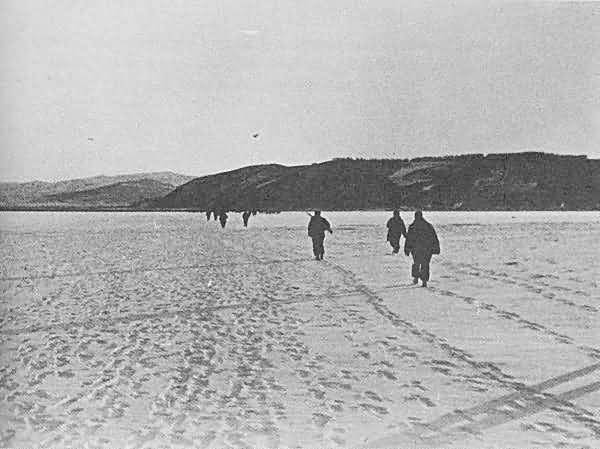
Task Force Faith Survivors on ice of Chosin Reservoir, 12/1/50
The group of men that had gone with Captain Bigger, after having run theChinese off of the high ground on the west side of the road, found that therewere still enemy soldiers between it and the road. Rather than fight back to theroad, Bigger led his men west and south to the reservoir shore, and then outonto the ice. Another group of about fifteen men, including Lieutenant Smith(who had commanded Company A), Lt. Richard E. Moore (one of his platoonleaders), and Lieutenant Barnes (an artillery forward observer), after knockingout one of the enemy machine guns on the same side of the road, watched CaptainBigger and his men heading toward the ice. They debated what they should do.They could see the trucks stalled along the road. They were out of ammunition.Deciding there was no reason to go back, they continued toward the reservoirice. A group of 15 or 20 Chinese, trying to head them off, came as far as thereservoir bank and fired at them without effect. One enemy soldier, however, didfollow them out on the ice to bayonet a man who had fallen behind. Six men ofthis group, including Smith, were wounded or had frostbitten feet.
Lieutenant Campbell stayed with the column of trucks following the men withMajor Jones. Just before leaving the last roadblock position, Campbell happenedto meet his platoon sergeant (MSgt. Harold M. Craig). Craig was wounded in themiddle of his back and was about to throw away his carbine and rely on hisbayonet. Figuring that he would have to make a break for it as soon as darknesscame, Craig felt his carbine would encumber him. Campbell gladly accepted thecarbine. It had a "banana clip" in it, with thirty rounds. As thetrucks moved forward he found one with a place on the side to which he couldcling. There were five other men clinging o the same side. It was a ragged anddesperatelooking column of men and vehicles. Those following Major Jones hadlittle semblance to a military unit. Without subordinate leaders, withoutformation or plan, they were a mixture of the remnants of all units, a largepercentage being walking wounded. About 15 of the original 22 trucks were left.
A mile or two beyond the roadblock two burned-out tanks partly blocked theroad and delayed the column until men could construct a bypass. Beyond that, thecolumn made steady but slow progress for another mile or so. Some of the menbegan to believe they were safe. There were stragglers along the road-men whohad struck out for themselves during previous delays. Some of them swung ontothe passing trucks. By this time, it was nearly 2100 and the column, havingcovered more than half of the approximate ten miles between the last defensiveperimeter and Hagaru-ri, approached Hudong-ni, the small lumber village. As theleading truck, which was some distance ahead of the rest of the column, enteredthe town, Chinese soldiers opened fire and killed the driver. The truckoverturned and spilled out the wounded men, a few of whom managed to work backup the road to warn the rest of the column. At this point Major Jones decided itwould be advisable to get away from the road and follow the railroad trackssouth. The railroad paralleled the road but was closer to the reservoirshoreline. Some of the men followed him. [35]
About 75 to 100 men stayed with the vehicles. An artillery officer collectedall who could walk and fire a weapon, and led them forward. At the edge of thevillage they began to receive fire from rifles and at least one automatic weaponof an enemy unit of undetermined size. After returning the fire for a fewminutes, the group returned to the vehicles. They picked up several wounded menfrom the overturned truck and took them back. The trucks moved a little closerto the village and halted. It was then 2200 or later, 1 December.
A group of officers and men decided they would wait where they were. Word oftheir situation, they argued, must surely by then have gotten through toHagaru-ri. Aid would undoubtedly arrive soon.
They waited about an hour or so until the rear of the column began toreceive small-arms and mortar fire. Then they decided to make a run for it.Lieutenant Campbell was still hanging to one of the trucks. "We'll nevermake it through," he thought.
As the column proceeded through the village, moving slowly, enemy firekilled the drivers of the first three trucks. The column halted and an enemymachine gun immediately raked it at point-blank range. Jumping off the tailgateof the third truck, Lieutenant Campbell scrambled for the right side of the roadwhere an embankment separated it from a small plot of cultivated ground eight orten feet beneath. In the darkness he could see only outlines of the trucks onthe road and the flashes of a machine gun firing from a hill on the oppositeside of the road. Leaning against the embankment, he fired his carbine at themachine gun's flashes. A body, an arm torn off, lay nearby on the road. Theoverturned truck, its wheels in the air, rested in the small field below theroad. Someone pinned under it kept pounding on the truck's body. Wounded men,scattered nearby, screamed either in pain or for help. Up on the road someonekept yelling for men to drive the trucks through. Chinese soldiers closed in onthe rear of the column. Campbell saw a white phosphorus grenade explode in therear of a truck at the end of the column.
"This is the end of the truck column!" he said to himself.
Someone yelled, "Look out!"
Campbell turned in time to see a 3/4-ton truck coming over the embankmenttoward him. As he scrambled to one side, the truck ran over his foot, bruisingthe bones. Someone had decided to try to get the lead vehicles off the road.Pushed by the fourth, the first three trucks, without their drivers, jammedtogether, rolled off the embankment, and overturned. Wounded men inside werespilled and crushed. The frantic screams of these men seemed to LieutenantCampbell like the world gone mad. He fired his last three rounds at the enemymachine gun, headed for the railroad track on the opposite side of the tinyfield, and dived into a culvert underneath the railroad. It began to snowagain-a fine, powdery snow.
Everyone scattered. Corporal Camoesas (company aid man) found himself in agroup of about fifteen men, none of whom he knew. Carrying six wounded, thegroup reached the reservoir. As Camoesas walked out on the ice, he looked back.Several trucks were burning.
Lieutenant Campbell crawled through the culvert. He found a man, wounded inthe leg, who could not walk. Two other soldiers came over the embankment andjoined him. Dragging the wounded man, the group walked in a crouch across therice paddy to a large lumber pile in the middle of the field. There, two moresoldiers joined them. At the edge of the reservoir, three quarters of a mileaway, several others joined Campbell's party. Staying close to the shoreline,the men walked on the reservoir ice. Campbell was not sure where Hagaru-ri was,but he felt they would reach it if they followed the reservoir shore.
The reservoir ice was not slippery. The wind had blown off most of the snow,leaving a rough-surfaced crust, and it was so thick that 76-mm shells hadricocheted off without appreciable effect.
At a North Korean house, an ROK soldier with them asked where the marineswere. He was told that American jeeps came down the road every day. Some of thegroup, suspicious of the North Koreans, wanted to continue across the reservoir,but Lieutenant Campbell thought he recognized the road. He led off, and the restfollowed. By then, he had seventeen men with him, of whom three were armed. Twomiles down the road, the group reached a Marine tank outpost, and the tankersdirected them to the nearest command post, where a truck took them to a Marinehospital in Hagaru-ri. Lieutenant Campbell arrived there at 0530, 2 December.The shell fragment in the roof of his mouth began to bother him.
Individuals and other groups straggled into Hagaru-ri for several daysbeginning on the night of 1 December. Lieutenant Smith and those men with him,who had left the column at the second roadblock, reached a Marine supply pointat Hagaru-ri about 2200 that night. A plane had dropped a note in a canteeninstructing them to keep away from the shoreline and continue across the ice. Alittle later that night, Captain Bigger hobbled in with his group.
The men who went with Major Jones, after following the railroad tracks forsome distance, had been fired on by an enemy machine gun. Many of the men tookoff toward the reservoir and began arriving at the Marine perimeter soon aftermidnight.
Most of the men who had served with Task Force Faith were left where thetruck column stopped near the lumber village of Hudong-ni, or were strewn alongthe road from there to the northernmost position. When those few men who couldmove had left, the others were either captured or frozen.
PFC Glenn J. Finfrock (a machine gunner from Company D) became unconsciousfrom loss of blood about the time the truck column came to its final halt. Itwas daylight on the morning of 2 December when he regained consciousness again.He moved down the road a short distance until he found several wounded mentrying to build a fire by one of the trucks-the one in which Colonel Faith hadbeen placed the previous evening. His frozen body was still in the cab. Sincethe truck appeared to be in good order, Finfrock and another man triedunsuccessfully to start it. As they were working on the truck some Chinesewalked toward them from the village, and several of the men ran toward the ice.Other were captured. The Chinese gave morphine to several men, bandaged theirwounds and, after caring for them for several days, freed them. [37]
Lieutenant Mortrude, wounded in the knee and in the head, walked toHagaru-ri from the blown-out bridge. It was 0330 on 2 December when he reachedfriendly lines.
Corporal Camoesas (the aid man) and his group carrying the six wounded men,after hiding in brush near the reservoir shore in order to rest, followed therailroad track until they came to the road leading toward Hagaru-ri. About 0800they met a Marine tank, and three hundred yards beyond were trucks andambulances waiting to take them to the rear. All day other men made their wayback to friendly lines.
On 4 December, when most of its survivors had returned, the 1st Battalion,32d Infantry, counted only 181 officers, men, and attached Republic of Koreatroops, of the original 1,053 that had begun the operation. The other battalionsin the perimeter had suffered equal losses. [38]
This was not the immediate end of trouble, since the enemy still controlledmuch of the road between Hagaru-ri and the port city of Hungnam. But atHagaru-ri the 1st Marine Division had a solid perimeter that included theairstrip, and there were food and ammunition and medical supplies. From Hungnamthe more seriously wounded were evacuated by plane. For the others, ten days offighting lay ahead.
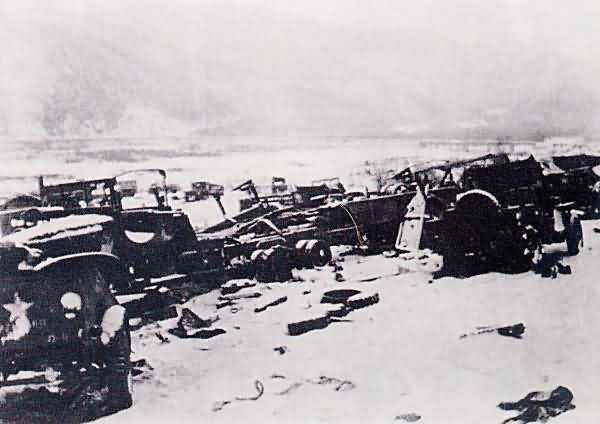
This Chinese photograph shows the Task Force Faith convoy destruction.
All the equipment and vehicles of two Infantry Battalions, the 57th Field Artillery Battalion and D Battery 15th AAA AW Battalion were lost in the fighting east of Chosin between November 27 and December 2, 1950. Not a single vehicle, artillery piece, mortar or machine gun of these units was saved. This debacle is in grim contrast to the withdrawal of the gallant Marine Regiments who successfully fought, and broke through, the same enemy, under the same conditions, bringing out most of their equipment and dead, and nearly all their wounded.
The reasons for this disaster, given the obvious heroism of many individual officers and men of 31RCT, are still debated but must call into question the preparation of 31RCT by X Corps command, training methods of Army Infantry in general, and command leadership of the US Army. Specifically, as compared to the USMC. Specifically, as compared to the USMC. A most telling statistic regarding the difference in fighting attitude between Army and Marine Corps personnel is the ratio of casualties to MIA. 50% or more of Army casualties were usually MIA, whereas the Marines usually had virtually none. Compare the numbers in the Chosin campaign, alone.
1stMarDiv C.O. General O.P. Smith and his battle-hardened Regimental Commanders had deliberately slowed their advance into the Taebecks in spite of demands for haste from X Corps commander Army General Almond. In their view, any advance must always be based on adequate preparation and support. This procedure subsequently allowed 1stMarDiv to coordinate its infantry, artillery, armor and air units during the fight-out, even preparing a crude air-field at Hagaru-ri for logistical support. Among other activities, this airfield enabled evacuation of over 4,000 wounded and frost-bitten Marines and Soldiers during Dec 2-5. This included more than 1500 7th Division troops, with all 31RCT survivors unfit for duty. Without the stubborn professional approach of the experienced Marine command staff and its veteran leadership at all fighting levels, the tragedy east of Chosin would have been a much more general disaster too terrible to contemplate.
As one veteran said, "Thank God for the Marines."
* NOTES
[1] Unless otherwise noted, this account is based on a narrative prepared inKorea by Capt. Martin Blumenson. To this account the Army author has added someinformation obtained from official records, and some obtained by supplementalinterviews or by letters from men who participated in the action.
[1-a] The major additions are based on more extensive analysis in Roy E. Appleman's "East of Chosin" and Chinese Army photographs and accounts in their Beijing Korean War Museum. (Note by B. L. Kortegaard)


